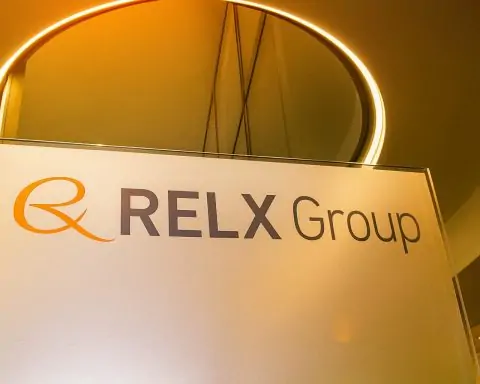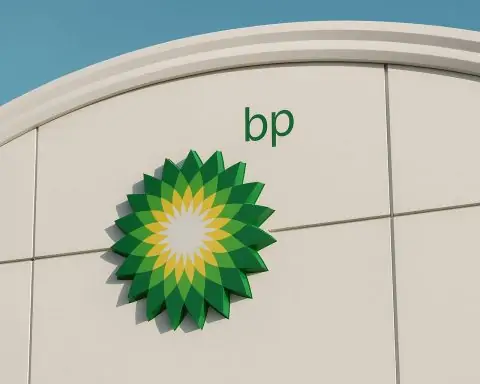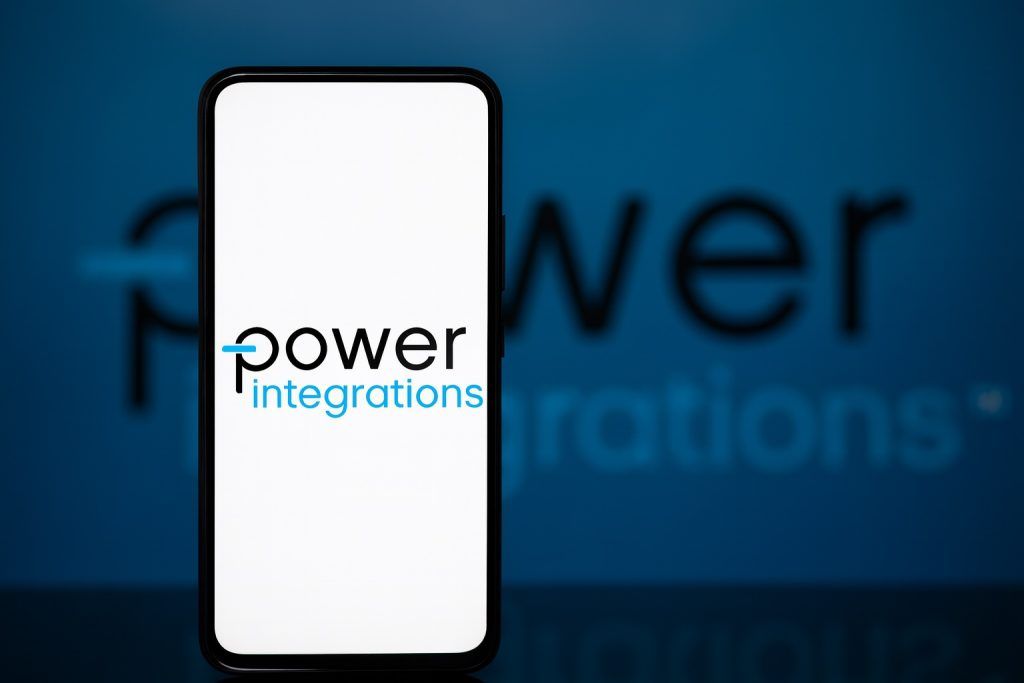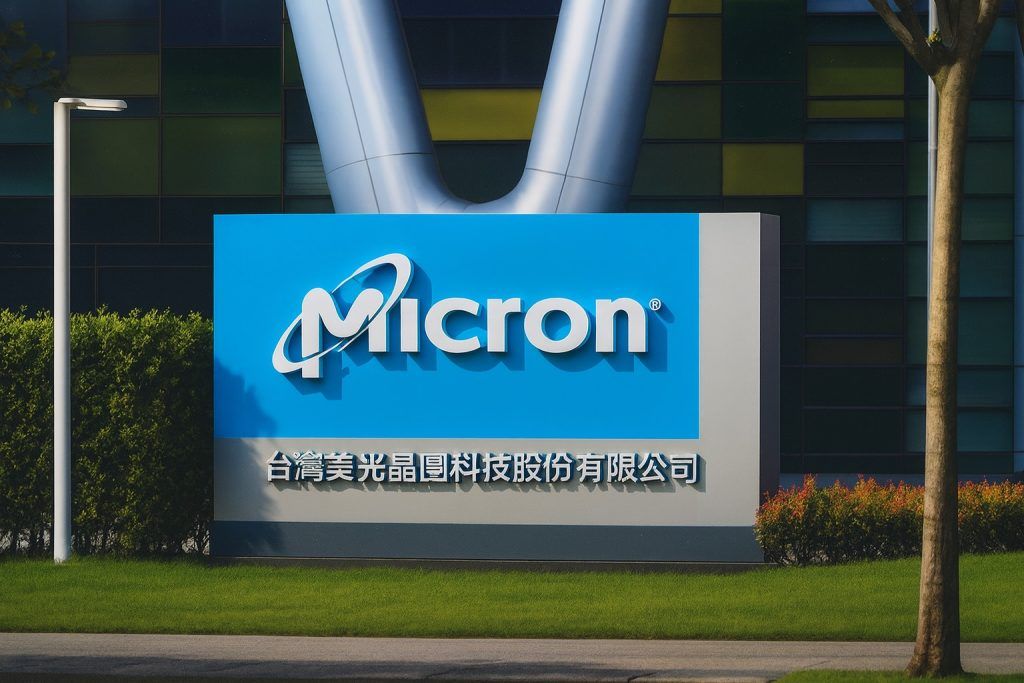- Price & Performance: NVTS closed at $9.97 on Oct 13, 2025 [1] after surging 21% on the day. 52-week range is roughly $1.52–$9.79 (new highs hit Oct 2025) [2]. The stock is up roughly +179% year-to-date [3] (nearly +300% over 12 months) amid the AI hardware boom.
- Market Cap & Valuation: Market capitalization is about $2.12 billion [4]. It trades at a very high price/sales (~31×) and is unprofitable (negative P/E) [5]. No dividend.
- Sector: Navitas is listed on NASDAQ (ticker NVTS) in the Technology sector under “Semiconductors” [6]. It is one of the few pure-play GaN/SiC power IC companies.
- Recent Catalysts: In Oct. 2025 Navitas announced a collaboration with NVIDIA to develop an 800‑volt DC power architecture for AI data centers [7]. Other recent moves: a new 8″ GaN wafer partnership with Powerchip [8], a $100 M stock offering to fund growth [9], and a sharp pivot toward AI/DC markets (cutting consumer products). These developments have driven the recent rally.
- Leadership & Events: Founder/CEO Gene Sheridan moved to Executive Chair and Renesas veteran Chris Allexandre became President & CEO on Sept 1, 2025 [10]. Navitas will report Q3’25 earnings on Nov 3, 2025 (after market) [11], a key catalyst given the momentum.
Stock Price & Recent Performance
Navitas’s stock has seen an explosive run in late 2025. After closing around $8–9 in early October, NVTS leapt to $9.97 on Oct 13 [12]. The 21.1% jump on Oct 13 came on unusually heavy volume (~124 million shares) – about 5× the normal daily volume [13] – fueled by news and short-covering. Finviz data show NVTS trading well above its 50-day (~$6.67) and 200-day (~$5.34) moving averages [14], reflecting strong upward momentum. The relative strength index (RSI) is around 70–77 [15] [16], indicating an overbought condition in the short term. The stock’s beta (~3.0) [17] and high short interest (~28% of float) also imply volatile trading and squeeze potential. In short, NVTS is in a powerful uptrend (150–180% YTD) but technically extended, so pullbacks are possible after such steep gains [18] [19].
Recent News and Developments
NVIDIA AI Partnership: The biggest headline is Navitas’s mid-2025 deal with NVIDIA to co-develop an 800-volt DC power architecture for next-gen AI data centers [20] [21]. NVIDIA plans to shift from 54V to 800V power rails in future “AI factory” servers by 2027, and Navitas was selected as a key GaN/SiC power-chip supplier. This endorsement instantly raised Navitas’s profile – Nasdaq/Marketbeat notes the stock “shot into orbit” on the news (up over 100% H1 2025) as the company became an “AI arms dealer” for data centers [22]. The Oct 13 press release on the NVIDIA collaboration (800V architecture) triggered the latest rally and after-hours spike.
Manufacturing Shift – 8″ Wafers: In October 2025, reports highlighted Navitas’s partnership with Powerchip (Taiwan) to move GaN chip production from 6″ to 8″ wafers [23] [24]. The larger wafers yield ~80% more chips per batch, lowering costs and boosting margins. This strategic foundry shift is seen as key to restoring profitability – analysts say it aligns with Navitas’s long-term goal of “stronger margins and steady growth” [25]. The timing (samples late 2025, volume in 2026) coincides with the ramp-up of AI and EV demand.
Capital Raise & Strategy: In Q2 2025, Navitas raised $100M by selling ~20 million new shares [26]. Management is using the proceeds to fund expansion into high-growth markets (AI data centers, solar, EV chargers) and to secure capacity (e.g. the 8″ wafers). They’ve stated an intent to exit low-margin mobile/consumer segments and focus on enterprise/industrial power. The fresh capital also strengthened the balance sheet (cash jumped to ~$161M at 6/30/25 [27]) and reduced financial risk (the company has essentially no debt).
Leadership Changes: Longtime co-founder/CEO Gene Sheridan transitioned to Executive Chairman as of Sept 2025, with Chris Allexandre (ex-Renesas/Renesas) taking over as President & CEO [28]. Allexandre is charged with driving the AI/data center transition. Investors reacted positively to the management shuffle – it signaled seriousness about this new growth phase.
Financial Analysis
Navitas remains in a deep transition phase financially. Revenue: Q2 2025 sales were just $14.5M [29] [30], down 29% year-over-year (from $20.5M in Q2’24) [31]. This decline reflects the pullback in consumer charger orders and China tariff headwinds. The company’s 2024 annual revenue was ~$83M [32]. Analysts now forecast ~$48–54M for full-year 2025 (–40% YoY) [33] [34], before a rebound to ~$53M in 2026 and ~$95M in 2027 as AI/data programs ramp [35].
Profitability: Navitas remains unprofitable. Q2’25 GAAP operating loss was $21.7M (non-GAAP loss $10.6M) [36]. EPS for Q2 was –$0.05 [37], in line with expectations. Net margin is deeply negative (~–180% in Q2) [38]. The company burns cash on R&D and growth. Analysts expect the full-year 2025 loss per share to widen (~–$0.51 consensus) before narrowing in 2026 (to about –$0.19) [39] [40]. No profitability is expected until perhaps 2027 or beyond when AI data center revenues arrive.
Guidance: Management guided Q3’25 revenue at $10.0M ± $0.5M [41] (assuming more tariff pressure and a leaner mobile business). Gross margin is seen around ~38.5% [42]. Expenses will remain high (~$15.5M opex) as the firm invests in new platforms [43]. With ~$161M cash on hand [44] (no debt), Navitas has runway through this down cycle.
Cash & Balance Sheet: As of 6/30/25, cash/short-term investments were ~$161.2M [45] (after the raise). Total debt is negligible. This strong balance sheet underpins investor confidence – Deutsche Bank noted Navitas has a “current ratio of 5.61 and more cash than debt” [46]. Cash burn is high, but with $75–160M on hand (depending on source) and no debt, liquidity is solid.
Technical Analysis
NVTS is technically very strong but overextended. It trades far above both the 50-day (~$6.66) and 200-day (~$5.34) simple moving averages [47], a sign of strong momentum. The RSI is in the mid-70s [48], indicating overbought conditions. October 13’s volume (~124M) was about 5× the norm [49], reflecting aggressive buying. The stock’s beta ~3.0 [50] (very volatile) and high short interest (~28%) mean moves can be magnified on both up- and down-days. In recent weeks, NVTS has been trending parabolically – charts show sharp up-and-down swings. Short-term technical risk is that after such a 20%-plus gap-up, profit-taking or a consolidation could follow. On the upside, the stock has no obvious resistance until near last highs (around $10), but the high RSI suggests caution. Over 2025 the trend is decisively up, but traders note NVTS is vulnerable to sentiment shifts given its stretched setup.
Analyst & Expert Commentary
Wall Street opinions on NVTS are mixed. Many analysts raised targets after the Nvidia news, but ratings remain cautious. For example, Rosenblatt Securities reiterated a Buy rating with a $8.00 target [51]. Deutsche Bank downgraded NVTS from Buy to Hold, even as it raised the target to $7.00 (from $3.50) [52], calling the NVIDIA deal a “strong endorsement” of Navitas’s GaN/SiC tech and forecasting 2025–27 data-center sales of $10M–$45M [53]. Needham (still Buy) trimmed its price target to $3.00, citing tariff risks and delays in the solar market [54]. Across 8 tracked analysts, 3 rate NVTS Buy, 3 Hold, and 2 Sell [55], with an average target just ~$5.65 [56] – well below the current price. Zacks Investment Research assigns NVTS a “Hold” rank, noting it “trades at a forward P/S ratio of 26.7X” (far above industry) [57]. In public commentary, some tech stock pickers highlight the AI tie-up as a huge catalyst – one quoted Navitas as possibly “one of the most important growth stories of the decade” because of AI power needs [58]. Others warn that much of the “future story” (NVIDIA chips, growth) is already priced in, given the sky-high multiples [59]. Institutional reports emphasize the long runway (AI, EV, solar) but also the risk that near-term fundamentals remain weak.
Price Forecast & Future Outlook
Analysts see NVTS catching a rebound in 2026–27, but forecasts vary widely. Motley Fool data shows Wall Street expecting 2025 revenue ~$48.6M (–42% YoY) and net loss ~$116M; jumping to $53.1M (+9%) in 2026 and $95M (+79%) in 2027, as NVIDIA-related chips finally ship [60]. The same analysis pegs 2027 losses at ~$68M. Zacks concurs that revenue should recover in 2026 (+23% forecast) after the current trough [61]. Deutsche Bank similarly projects a surge in data-center segment – on the order of $30–45M by 2027 [62] – and expects revenue growth to resume by late 2025 driven by EV and solar [63]. DB even suggests Navitas could reach EBITDA breakeven by 2026 if those new markets materialize [64].
However, these bullish forecasts hinge on execution. The NVIDIA collaboration won’t deliver meaningful revenue until 2027, and competition is fierce (see below). Any delays in GaN/SiC product launches or continued weakness in other segments could push out the recovery. Sharewise (in a Nasdaq article) notes that an “enormous amount of growth is already baked into the current stock price” [65] [66]. Still, many experts believe the upside is significant if Navitas can capture its projected slice of the AI power market. By comparison, the stock is trading at 20–30× sales (2025–26 forecasts) [67], so even a post-dip price near $5–6 (roughly consensus target) implies double-digit gains from here. Longer-term, if AI/data-center demand ramps as expected, Navitas could outperform larger peers (since it’s a pure-play in GaN/SiC).
Competition and Peers
Navitas competes in a crowded power-semiconductor field. In the gallium-nitride niche its peers include smaller GaN startups like Transphorm (now part of Renesas), Efficient Power Conversion (EPC), and GaN Systems (acquired by Infineon) [68]. More importantly, it faces major rivals in the high-voltage SiC/GaN space. Wolfspeed (WOLF) – a pure-SiC leader building a new $3B fab – is aggressively targeting EV and industrial power markets [69]. ON Semiconductor (ON) has been expanding its SiC portfolio and explicitly announced a partnership with NVIDIA on 800V DC power modules [70]. Infineon Technologies and STMicroelectronics (giants in power chips) have also been named NVIDIA collaborators for 800V architecture [71]. Both have extensive GaN/SiC lines (Infineon bought GaN Systems in 2023) and deep customer relationships. In other segments Navitas competes indirectly with Analog Devices/Texas Instruments for lower-voltage GaN, and Power Integrations for chargers. In short, big well-capitalized incumbents loom large. Navitas’s “pure-play” GaN/SiC focus means it must out-innovate giants on efficiency and cost to win design wins. The relatively small current sales base means any multimillion-dollar AI contract could “move the needle” for Navitas in a way it wouldn’t for Infineon or ST [72].
Investor Sentiment
Social and retail sentiment around NVTS is fervent. After the Oct 6 AMD/OpenAI news, traders noted NVTS jumped +3.45% intraday and speculated on further upside – one Reddit post cited “analysts projecting up to 50% more upside in 2026” for Navitas [73]. On r/NVTS_Stock, opinions range from “I believe in NVTS!” memes to anxious dip-buying questions. For example, one user asked if $8.39 is a buying opportunity or whether to “sell and buy the dip” [74]. StockTwits and Twitter threads highlight NVTS as a leveraged AI play, with many retail investors long shares. However, chatter also acknowledges risks: some note the rally is largely sentiment-driven and question the valuation. In sum, the buzz is cautiously optimistic: most social media contributors celebrate the NVIDIA tie-in and pure-play growth angle, but also expect volatility. No single high-profile influencer has overtaken the story yet, so retail investors seem to be driving much of the momentum (for better or worse).
Risks & Challenges
The main risks are execution and competition. Navitas has yet to prove that its GaN/SiC chips can win large volume in data centers or EVs. The high 800V architecture is technically promising, but NVIDIA’s ecosystem is still evolving; if NVIDIA or other hyperscalers pivot or internalize power designs, Navitas could lose out. Tariffs and geopolitics remain a concern: previous NVTS guidance cited China tariff pressures, and a key portion of revenue (China/Asia consumer) is sensitive to trade rules [75] [76]. Financially, NVTS is still on a steep loss trajectory. If 2026 growth disappoints or losses don’t narrow as expected, valuations could tumble – analysts warn there’s “far too much optimism baked in” [77]. Lastly, the stock’s high short interest means any negative catalyst can cause a rapid drop (as well as amplify rallies). In technical terms, a fall back toward $6–8 (near the old moving averages) would not be surprising given the RSI spike.
Sources: Authoritative news, filings, and analysis from NVTS investor releases, MarketBeat, Nasdaq/Zacks articles, ts2.tech, Motley Fool, Investing.com, and public social media posts [78] [79] [80] [81] [82] [83] [84] [85] [86]. These cite official press releases (Navitas PR), analyst reports, and market data.
References
1. finviz.com, 2. ts2.tech, 3. finviz.com, 4. finviz.com, 5. finviz.com, 6. finviz.com, 7. www.globenewswire.com, 8. navitassemi.com, 9. navitassemi.com, 10. ts2.tech, 11. ts2.tech, 12. finviz.com, 13. www.marketbeat.com, 14. www.marketbeat.com, 15. ts2.tech, 16. finviz.com, 17. www.marketbeat.com, 18. ts2.tech, 19. www.marketbeat.com, 20. www.globenewswire.com, 21. ts2.tech, 22. ts2.tech, 23. www.nasdaq.com, 24. ts2.tech, 25. www.nasdaq.com, 26. navitassemi.com, 27. navitassemi.com, 28. ts2.tech, 29. navitassemi.com, 30. www.marketbeat.com, 31. navitassemi.com, 32. ts2.tech, 33. finviz.com, 34. ts2.tech, 35. finviz.com, 36. navitassemi.com, 37. www.marketbeat.com, 38. www.marketbeat.com, 39. finviz.com, 40. ts2.tech, 41. navitassemi.com, 42. navitassemi.com, 43. navitassemi.com, 44. navitassemi.com, 45. navitassemi.com, 46. www.investing.com, 47. www.marketbeat.com, 48. ts2.tech, 49. www.marketbeat.com, 50. www.marketbeat.com, 51. www.marketbeat.com, 52. www.investing.com, 53. www.investing.com, 54. www.investing.com, 55. www.marketbeat.com, 56. www.marketbeat.com, 57. www.nasdaq.com, 58. ts2.tech, 59. finviz.com, 60. finviz.com, 61. www.nasdaq.com, 62. www.investing.com, 63. www.investing.com, 64. www.investing.com, 65. ts2.tech, 66. finviz.com, 67. finviz.com, 68. ts2.tech, 69. ts2.tech, 70. ts2.tech, 71. ts2.tech, 72. ts2.tech, 73. www.reddit.com, 74. www.reddit.com, 75. navitassemi.com, 76. www.investing.com, 77. finviz.com, 78. ts2.tech, 79. www.globenewswire.com, 80. finviz.com, 81. navitassemi.com, 82. navitassemi.com, 83. www.marketbeat.com, 84. www.investing.com, 85. ts2.tech, 86. www.reddit.com







